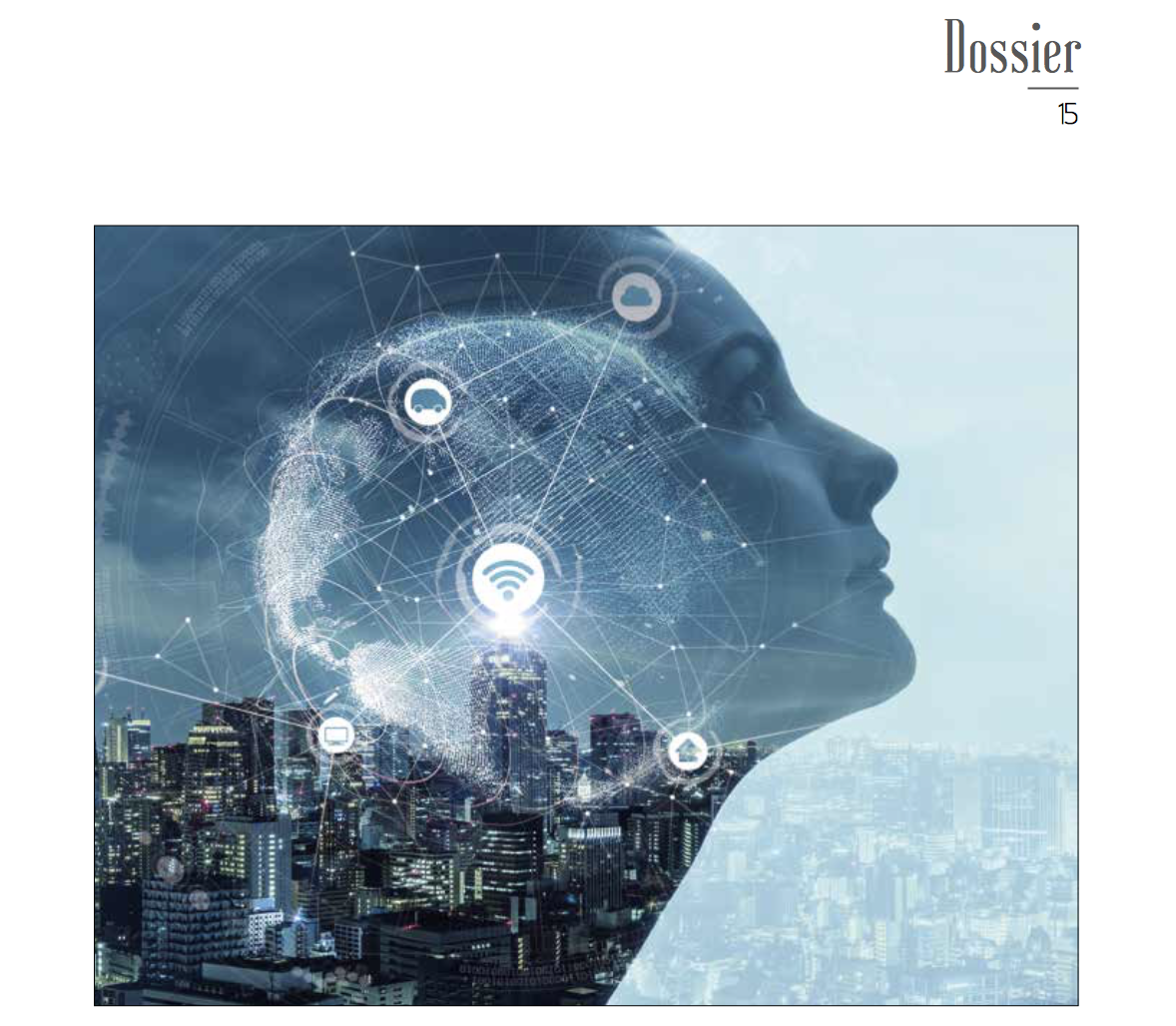What place for artificial intelligence in financial services?

Article by Alain Clot published in the Magazine of Financial Professions and the Economy.
Artificial Intelligence (AI) in financial services is like Arlésienne: we talk about it a lot, we hardly see it… This is true both in so-called traditional finance and in start-ups.
Depending on the case, it is generously mentioned to give an avant-garde image to its business model or, on the contrary, it is silenced to hide the replacement of advisers by technological modules for certain operations.
If little or no trace of it is detected, it is for two distinct reasons:
The first is that it is usually not seen. AI is most often integrated into treatment, greatly improving its efficiency or taking charge of certain technical bricks.
The second reason is that the integration of AI at the heart of financial models is still in its infancy. In fact, we are witnessing certain abuses of language in this area.
A little hastily assimilated to artificial intelligence are various technologies which, to be genuinely innovative, do not properly fall under AI. This is the case with robotization projects that are flourishing within banking and insurance (almost half of the establishments have launched them). While these generally use data technologies and complex algorithms well, we cannot speak of artificial intelligence.
These developments do indeed mobilize little or not the characteristics of AI : cognitive sciences applied to mass data, correlation algorithms for unstructured databases; even less second-generation AI, namely the ability of systems to learn and improve as they interact with their users ("Machine Learning") and the management of complex situations from computer architectures. neural type. Only a small number of establishments have launched significant learning projects.
Clearly, we have especially seen developments aimed at doing better, faster and cheaper than humans. Not really yet what he does not know how to do ...
The main objectives are productivity gains, improved interactions with the customer, including the automatic execution of simple instructions and the fight against fraud. In particular, natural language interfaces (voice, writing, more rarely images), semantic applications (automatic response to incoming mails for example), conversational robots (“chatbots”), identification technologies (biometrics) were mobilized.
The objectives sought were on the whole achieved (productivity gains in particular), sometimes at the cost of iterative adjustments as in the case of inbound emails.
Once this first phase has been completed, companies in the sector are resolutely entering the second.
It is true that the potential of AI is immense in the financial sector. It is of course in all service compartments, but particularly resonates in banking and insurance, faced with three strategic issues:
First of all, faced with the rise in competition from new entrants, the need to sharply lower costs, both operating (breakeven) and commercial (acquisition of new customers). This last aspect is fundamental. The digital economy is based on its ability to reach customers at a very low cost, in any case much lower than that of physical distribution networks. A traditional bank acquires its client at a cost of several hundred euros (marketing, network, welcome gift, etc.), while start-ups do so for a few tens of euros.
The second strategic challenge is to optimize risk management, fundamentally at the heart of the business of banks and insurers. They are confronted with the rise of uncertainties, fraud and cybercrime. The subject is just as much the identification of risks, their management and the cost of the risk itself.
Last but not least, the sector must improve the customer experience and develop new services., especially in terms of advice, which will be "the mother of all battles" in the years to come.
AI will be a very effective contributor to the three projects:
- in terms of costs, through intelligent robotization and commercial targeting. Experience shows that the use of AI also contributes very significantly to income generation.
-
in terms of risks, thanks to the crossing, via powerful algorithms, of databases (internal and external) and the analysis of “weak signals (public data and social networks). The predictive capabilities of AI are key in this area.
-
in terms of customer experience, by optimizing the exchanges with the networks, by allowing precise diagnoses, the individualization of the service, the network relation (community of customers, forums, etc.), the relation 24/24.
And of course by exploiting the considerable potential of AI in consulting: diagnosis of customer needs, scalable support for their requests, recommendations, alerts, reporting, etc.
The best is yet to come, as the potential of AI is strong in finance and its embryonic introduction. Scaling up (“IA at Scale”) will be a real challenge.
Companies in the sector will derive maximum benefit from this if they are based on three essential convictions:
- It is advisable to finely manage the “and” and the “or”, the human and the machine or the human or the machine, or more precisely the augmented human; it is highly probable that, when it comes to wealth advice, for example, the best solution is hybridization, ie an adviser strongly supported by AI. At the very least, the possibility of accessing a human being at any time.
- Competence in AI is an extremely scarce resource. A recent study reported only 28 experts in the world (holders of a doctorate in science), with real French legitimacy; attracting it requires building its attractiveness, and therefore its vision. By the way, let us remember that France has the largest number of AI research laboratories in Europe (000 ahead of Germany 82) and ranks second in terms of start-ups dedicated to this subject (43 behind the GB with 308). (774).
- AI is not "just another tool", an additional technology. It is now at the heart of the model and an opportunity to rethink it in depth. Contributing at the same time to the three strategic areas (productivity, risk, customer experience), it combines with the other two blocks of digital technology, Blockchain and Internet of Things. The result is a complex issue of change management and, it must be said, the apprehensions that this revolution arouses.
It is necessary to rethink oneself as a player in technology and data.
In this regard, cooperation between traditional players and start-ups is essential, if only to prepare for the GAFA-BATX offensive.
The subject is therefore less technological than strategic and even cultural. It makes it all the more exhilarating!
(1) Source France Digitale & Roland Berger

